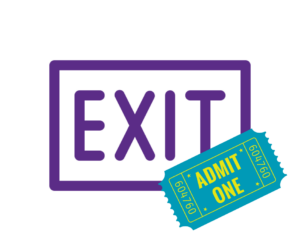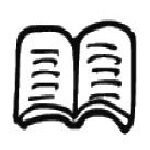STRATEGY FOCUS
Admit Slip/Exit Slip
PURPOSE
The Admit and Exit Slips bridge students into and out of new learning. They provide a structure and process for questioning students about critical content and concepts, create quick opportunities to gather evidence about student knowledge and learning needs, and create a context for community dialogue focused on important concepts. Students prepare the Admit Slip prior to entering class for the day or at the beginning of the lesson and their Exit Slip at the end of a lesson or class period. Students may be asked to write about essential ideas from the previous lesson, a question they need answered, a prediction for new learning, reflection on their understanding of new concepts, or synthesize learning. Teachers use the student responses to inform next steps and to address misconceptions.

PROCESS
- Determine the purpose of the Admit or Exit Slip and how student responses will be used.
- Create the prompt that students will respond to, such as a question, statement, or sentence starter.
- Assign the Admit or Exit Slip to students either at the beginning or end of a lesson for them to submit as they arrive or leave the class.
- Collect the Admit or Exit Slips and quickly scan them to assess if there is something that needs to be addressed or corrected right away or if there are good examples to share with the whole group. The information collected should be used to make decisions about next instructional steps.
PROBING QUESTIONS
CONSIDERATIONS
- What new questions do you have about this topic?
- What did the Admit or Exit Slip reveal to you about your learning?
- After completing the Admit or Exit Slip, how did your thinking about or understanding of the new information change?
- Admit Slips do not have to be collected right away by the teacher. For example, this strategy could be an opportunity for pre-writing before students engage in an Academic Dialogue activity.
- Admit and Exit Slips are most effective when the prompts are open-ended, not yes/no or single answer questions, and ask students to reflect on their understanding, make connections, and ask their own questions.
- Admit and Exit Slips provide the teacher with evidence of students’ understanding and possible misconceptions. They are most effective as a “temperature check” after learning and as a precursor to deeper discussion or thinking, not as something to be graded.
- There are no special materials needed for this strategy. Students can write their Admit or Exit Slips on a sticky note, index card, scrap paper, or teacher-provided template.
CONTENT APPLICATIONS
![]()
SOCIAL STUDIES
Students identify 2 similarities and 2 differences between the American Revolution and French Revolution.
![]()
WORLD LANGUAGES
After learning to conjugate verbs in the past tense, students write 3 sentences about what they did the evening before in the target language.
 ENGLISH
ENGLISH
LANGUAGE ARTS
Prior to engaging in reading A Long Walk to Water, students jot down a list of all the times they’ve used water in the past day in order to discuss what life would be like without access to clean water.
 HEALTH & PHYSICAL EDUCATION
HEALTH & PHYSICAL EDUCATION
Ask students, “If you were creating a quiz about the circulatory system, what are two questions you’d include?”
![]()
MATHEMATICS
Students solve a problem from their new learning and write out the steps they used to solve it.
![]()
CAREER & TECHNICAL EDUCATION
Students create a brief plan for how they will practice and improve their skills in accurately measuring a patient’s blood pressure.
 SCIENCE
SCIENCE
When students enter the room, display a graph or data table that relates to the day’s (or previous day’s) learning on the smart board. Students use science skills to analyze and interpret the graph or data table to make observations. Then, students create a claim and support the claim with evidence (or explain how the data connect to what they’ve been learning).
 VISUAL & PERFORMING ARTS
VISUAL & PERFORMING ARTS
Ask students, “How would you explain impressionism to a classmate who was absent?”
Sources
Billmeyer, R. and Barton, M. L. 1998. Teaching reading in the content areas: If not me, then who? 2nd Edition. Mid-continent Regional Educational Laboratory.
Fisher, D., and Frey, N. (2004). Improving Adolescent Literacy: Strategies at Work. New Jersey: Pearson Prentice Hall.
